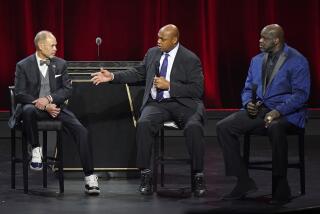Editorial: FCC, give cable and satellite TV viewers wider access to set-top boxes
Electronics stores are a TV lover’s paradise, filled with a rich bounty of high-definition sets, Blu-ray disc players and Internet video adapters. What they don’t offer, however, are many good replacements for the set-top boxes that consumers have to rent from their cable or satellite TV provider. That’s true even though a 1996 federal law requires that consumers have access to set-top boxes from someone other than their pay-TV provider. Last month, the Federal Communications Commission launched another effort to promote consumer choice and innovation in those devices, and this time it must finish the job.
Set-top boxes are stripped-down computers that unlock scrambled TV signals and video-on-demand programs. There’s been plenty of innovation in this arena — witness TiVo’s digital video recorders, for example — but such breakthroughs have been slow to reach cable and satellite set-tops, if at all. That’s a testament to the pay-TV operators’ eagerness to control virtually every aspect of the TV viewing experience. And with up to 100 million households paying monthly fees to rent their boxes, there’s no small amount of money involved. For example, Time Warner Cable charges $33 a month in Los Angeles for its advanced set-top box and a companion device.
The 1996 mandate should have forced cable and satellite’s lackluster set-top boxes to compete with better versions made by the likes of Samsung, Apple and TiVo. But the FCC exempted satellite TV services, and it’s never forced the cable industry to make real competition possible. Cable operators have developed a standard plug-in card (dubbed CableCard) that allows other manufacturers’ set-top boxes to decode scrambled TV channels. For access to on-demand programs and other interactive cable services, however, most consumers still have to rent a box from their cable provider.
Congress recently passed a bill that relieves cable operators of the obligation to use CableCards in new set-tops boxes beginning next year, while requiring the FCC to gather recommendations for a CableCard replacement that would let all set-top boxes work with any pay-TV service. The technical challenges are severe, yet the smartphone industry shows that it’s possible to build devices that can connect to multiple different, secure networks.
Rather than trying to unify the pay-TV industry behind a single standard, the FCC may only need to ensure that manufacturers can build boxes adaptable to several widely used types of security. Most important, the commission must hold cable and satellite operators to their obligations under the 1996 law and give customers the benefits of competition that have long eluded them.
Follow the Opinion section on Twitter @latimesopinion
More to Read
A cure for the common opinion
Get thought-provoking perspectives with our weekly newsletter.
You may occasionally receive promotional content from the Los Angeles Times.






